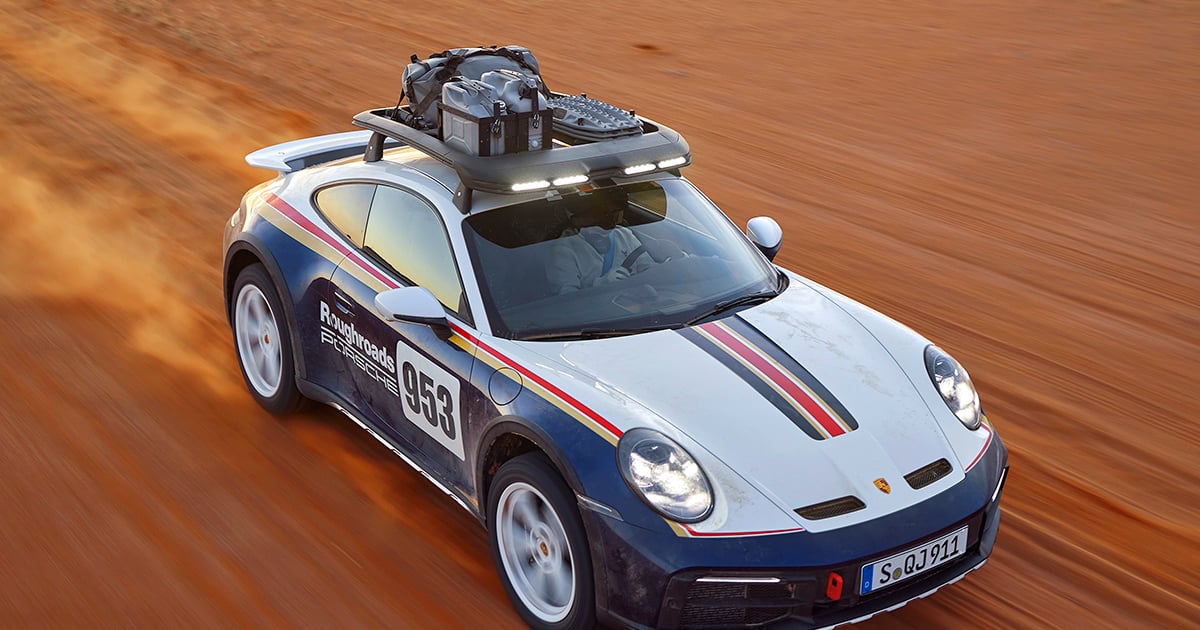
Porsche is pitching its new 911 Dakar as a sports car aimed at the SUV set.
The rally-inspired Dakar features a jacked-up suspension, all-terrain tires and an antilock braking system optimized for loose gravel.
Porsche unveiled the two-door off-roader on the eve of the Los Angeles Auto Show. The 911 Dakar is limited to 2,500 units globally and starts at $223,450, including shipping, in the U.S. starting next Spring.
The Dakar’s appeal extends beyond the shriveled pool of two-door sports car buyers. Its racy performance and utility ride speak to both the on-track and off-road demographic.
“When drivers are looking for crossovers and sport-utilities, appealing to these buyers means going to where they are,” said Sam Fiorani, vice president at AutoForecast Solutions.
What the 911 Dakar lacks in volume, it makes up in buzz.
“It’s a showpiece that allows engineers to go to town and show what they can do,” said Ryan Kirchner, new-car manager at Porsche of The Main Line in Newtown Square, Pa. “Porsche wants to build its cars for the extremes.”
A 3.0-liter, twin-turbo Boxer engine delivers 473 horsepower and propels the 911 Dakar from zero to 60 mph in 3.2 seconds.
It rides 50 millimeters higher than the 911 Carrera. The standard lift system, designed to help clear obstacles at low speeds, can raise the car by an additional 30 millimeters — achieving ride height and ramp-over angles similar to conventional crossovers, Porsche said.
Rear-axle steering, engine mounts adopted from the 911 GT3 and a body roll-reducing system enable the Dakar to tackle sand and loose gravel.
Two drive modes — Rallye Mode and Off-Road Mode — offer off-road performance. Rallye Mode helps on uneven surfaces and biases power to the rear axle. Off-Road Mode maximizes traction on sand and in rough terrain.
IMG01
Rallye Launch Control, developed for this model, allows wheel spin of up to 20 percent.
The Dakar weighs 3,552 pounds and is designed for the outdoors. It features a fixed rear spoiler and a carbon fiber-reinforced plastic hood with large openings designed to extract air.
Red front and rear tow hooks made of forged aluminum, flared fender arches and rocker panels add to the off-road appearance, as do stainless steel body elements on the front and rear fascia and side skirts. The side air intakes in the front fascia have stainless steel mesh grilles to keep out rocks and other debris.
A 12-volt socket delivers power for the headlights of the optional roof basket that can hold 92 pounds of water canisters, shovels and other camping gear. A roof tent is available.
The model name Dakar is a nod to the first overall victory by Porsche in the Paris-Dakar rally, achieved in 1984 by a purpose-built Porsche 911 fitted with an all-wheel-drive system for the first time.
IMG02
The 911 Dakar is offered with an optional two-tone paint Rallye Design package inspired by the iconic winning car.
Engineers have racked up more than 300,000 miles with the 911 Dakar under what Porsche calls “extreme conditions.” In addition to tests at Porsche’s off-road proving grounds in Weissach, Germany, the car has tallied 6,000 miles off-road, from frozen Swedish lakes to Moroccan dunes.